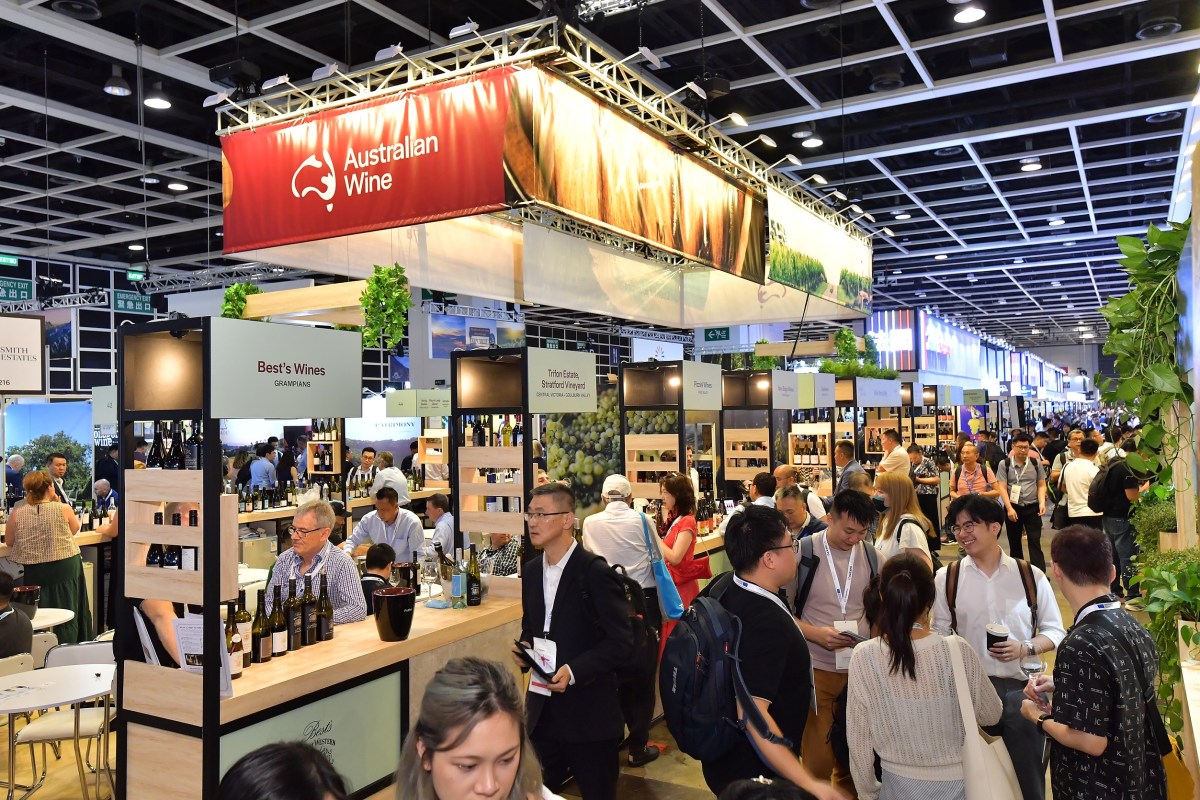At Vinexpo Asia, Australian wine producers spoke to TheShout about the conversations they were having with South-East Asian buyers, and what that region is looking for in Australian wines.
Held in Hong Kong recently, the show was particularly important for Australian exhibitors, as it was the first wine show within Asia, since the lifting of Chinese tariffs on Australian wine. There was a lot of excitement surrounding re-engaging with the Chinese market, as well as other buyers within the region. With TheShout attending the expo, here are some of the recurring insights we heard from wineries at Vinexpo Asia.
A united front
The Australian stand was visibly one of the busiest – if not the busiest – section of the expo for the entire three days of the show, with even Vinexposium CEO Rodolphe Lameyse commenting on the interest in Australian wines. Part of the buzz surrounding the Australian section of the expo can be contributed to the fact that the majority of Australian exhibitors took part in the Wine Australia pavilion. The pavilion presented a cohesive, united front with the same branding and lighting, and no walls separating each exhibitor, and collective meeting spaces within the pavilion.
Many exhibitors remarked at how effective the collaborative effort had been in drumming up interest, as well as creating a sense of camaraderie among peers.
“It’s been wonderful. We’re all talking to each other and working together. If I’ve got a deal going on and I can help someone else out, I will. I’m really pleased,” stated John Gerber, proprietor of Château Tanunda.
“I think the fact that we’re not all in individual booths, we haven’t even just got the walls, breaking it down helps,” added Danika Windrim, marketing manager for House of Arras.
“I’ve just noticed with the people on the stands next to us, we’re sharing a glass of wine and conversing at the end of the day, or we’re sharing each other’s tables for meetings. It’s actually been a really lovely team effort. Even just introducing contacts to each other. That’s something that I’ve been conscious of doing as well for some of the smaller brands.”
Interest in wine regions
Part of the new Wine Australia branding is all about highlighting the diversity of Australian wine. When highlighting the breadth and depth of the nation’s wines, Wine Australia CEO Martin Cole, called Australia “a continent of wine”.
With 65 wine regions throughout the nation, it was clear at Vinexpo Asia that this was of interest to the buyers. Wine Australia also held masterclasses throughout the three days on the different regions and their varietals within the pavilion. It’s also something that the exhibitors noticed in their discussions with expo visitors.
“Coming from Western Australia, and then coming from the youngest region of Western Australia, it’s been really refreshing to have people wanting to know more about Australian wine, rather than just saying ‘Can I try your Shiraz?’” stated Vasse Felix estate sommelier, Evan Gill.
“Which is fine, we’ve built a reputation in Australia for almost 200 years of producing some world-class, unique Shiraz. But what has been really interesting is people being interested in ‘Where exactly are you? And what is your terroir? And what is your culture of winemaking?’
“I think that’s in line with the general education of trade and consumers improving, particularly in South-East Asian markets.”
Pricing and distribution
With the lifting of tariffs, re-engaging with the Chinese market was a significant focus for Australian exhibitors at Vinexpo Asia. But coming off the back of covid, the tariffs, and global economic pressures, the buying landscape has definitely altered and producers need to adapt.
“China has changed a lot. Wine consumption is down as people are drinking a lot less. The economy has gone through its own challenges as well. So disposable income that was usually reserved for wine is often is now less, so there’s less money in the kitty to go around,” explained Howard Park Wines director Richard Burch.
“And I think a lot of the businesses that are involved with wine supply chains and distributors have changed as well. So that it’s trying to understand what those businesses look like now, and what capacity they have to sell wine in those various markets.”
Gerber agrees: “We don’t want 1000 guys doing the same product, we want to be a channel of, I’d say, mini exclusivity. Because the market is probably shrunk anywhere from 60-70 per cent over the last four years. So the emphasis is now on very good quality, value for money serious product.”
The teams at House of Arras and Handpicked Wines were also looking at new opportunities within China.
“It’s not just focusing on the on-premise, but also the retail experience and online. That’s one thing we see as a huge opportunity, building a direct-to-consumer online platform as well. And so people come back to the comfort of their home and learn and educate themselves about the brand,” explained Windrim.
And while consumption may be down and pricing may have settled, it’s clear there is still a desire for premium wines, as illustrated at House of Arras. The winery will only be selling from Brut Elite and above in its range in China, with Brut Elite retailing for $65 in Australia.
“We’re taking the premium stance, and we feel that that’s the best fit for building the brand in that market for the long term as well,” stated Windrim.
Overall, Vinexpo Asia was an exciting and reinvigorating event for Australian wineries to engage with south-east Asian markets, as Burch attested.
“I think the future for Australian wines has got some nice bright sparks there, we just need to pursue it and keep at it.”

